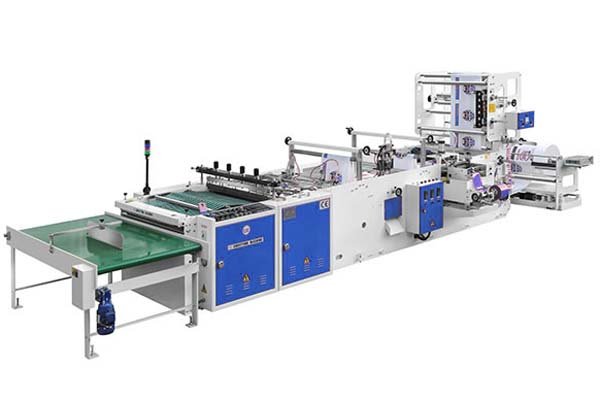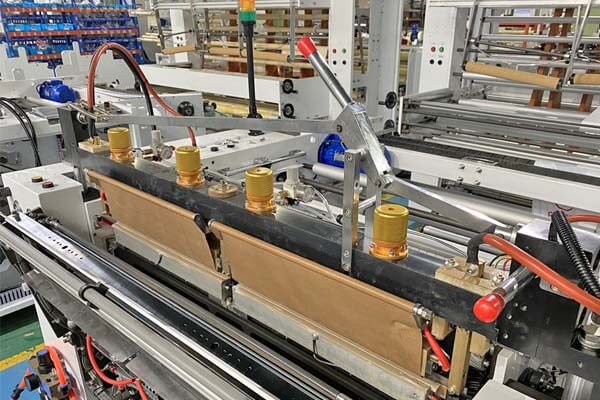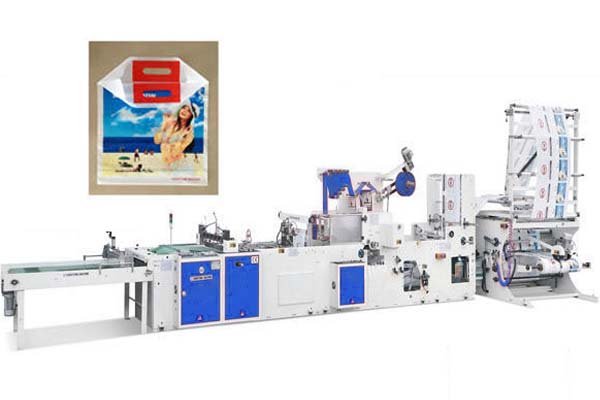
Purchasing the right plastic handle bag machine requires close attention to technical specifications. A misaligned choice can affect production efficiency and lead to financial losses. Below are five critical specifications to assess:
Key factors to check:
- Production speed (bags/hour)
- Supported bag dimensions (width/length)
- Material compatibility (e.g., LDPE, HDPE, PLA)
- Sealing technology (such as heat sealing)
- Level of automation (semi or fully automatic)
These specifications influence operational performance, output quality, and long-term cost-effectiveness.
The Role of Material Type in Machine Selection
The choice of plastic film is directly tied to machine requirements. Each material requires specific settings for temperature, tension, and cutting. Choosing a machine that accommodates these needs is essential for smooth operation.
Different materials require different:
- Sealing temperatures
- Tension control systems
- Cutting mechanisms

Common Material Types
LDPE and HDPE
- LDPE is softer and more flexible.
- HDPE is stronger and more rigid.
- Requires accurate heat control to ensure a solid seal without burning.
Laminated and Multi-Layer Films
- Thicker and used in food packaging.
- Need more sealing pressure and robust construction.
Biodegradable Films (e.g., PLA)
- Sensitive to tension and temperature.
- Require advanced tension management and low-temperature operation.
Material Compatibility Overview
| Material Type | Machine Requirement | Common Use Case |
|---|---|---|
| HDPE/LDPE | Stable and accurate heat sealing | Shopping and grocery bags |
| Laminated Films | High-pressure sealing, reinforced frame | Food packaging, pouches |
| Biodegradable (PLA) | Sensitive heat/tension control, smooth feeding | Eco-friendly carry bags |
Semi-Automatic vs. Fully Automatic Machines
Automation level influences production volume, cost, and labor requirements. Choosing between semi-automatic and fully automatic machines depends on business size, throughput goals, and budget.
Key difference:
- Semi-automatic systems require operator input.
- Fully automatic systems run from start to finish with minimal supervision.

Semi-Automatic Systems
- Entry-level cost
- Suitable for smaller production
- Requires manual handling for certain steps
Pros:
- Lower investment
- Flexible for custom jobs
- Simpler maintenance
Fully Automatic Systems
- High-volume production
- Minimal labor required
- Complete automation with PLC touchscreens
Pros:
- High efficiency
- Lower labor cost
- Consistent product quality
Feature Comparison
| Feature | Semi-Automatic | Fully Automatic |
|---|---|---|
| Initial Cost | $8,500–$25,000 | $23,000–$88,000+ |
| Production Speed | Moderate | High |
| Labor Requirement | 1 operator required | Minimal |
| Output Consistency | Operator-dependent | Machine-controlled |
| Best Use Case | Startups, small batch jobs | High-volume, long-run jobs |
Pricing Breakdown: Patch Handle Bag Machines
Typical price range:
$8,500 to $15,500 USD

Base Model (~$8,500)
- Standard frame
- Feeding, sealing, and cutting system
- Basic die-cutter
- Manual control panel
Optional Upgrades
- Servo Motors – Speed & energy efficiency
- Custom Die Cutters – Unique shapes
- Embossing Units – Add logos
- Advanced HMI – PLC touchscreen with diagnostic tools
- Auto Stacker – Hands-free bag collection
Certifications to Look For
CE Compliance
- Ensures safety compliance for EEA
- Includes:
- Emergency stop buttons
- Safety guards
- Proper electrical protections
ISO 9001 Certification
- Indicates strong internal quality control
- Typical quality checks:
- Steel hardness testing
- Laser-based alignment
- 72-hour continuous testing
- Safety feature inspection
- Final pre-shipment validation
Final Thoughts
Evaluating the right plastic handle bag machine involves more than just price. Key considerations include production speed, film compatibility, level of automation, and compliance with international quality standards. Choosing a machine that aligns with your specific production needs helps ensure a smoother operation and a better return on investment.






